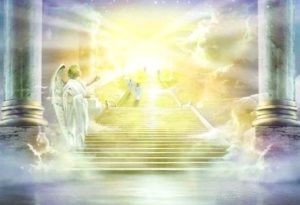[Greek] λευκαίνω (leukainō), [Latin] albus: to make white, to whiten, to bleach; Mk.9:3, Rev.7:14

The Ancient One (God) on His throne, with snow bright clothing and hair white as wool (Dan.7:9)
Background Information:
Greco-Roman culture: This term primarily has the sense of having to whiten. Various nuanced expressions indicating “to make white” are found in literature and poetry. Such examples are “they beat the water white with the oars” and “the time which makes hair white”. Greek writers make reference to leuce, a disease characterized with shining patches on the skin and hair turned milky white. White plays a prominent role in being a color pleasing and suitable to the gods. White is the color of helpful gods and goddesses. Often sacrificial animals had to be in white, which indicates their purity. In addition, white is the color of joy, shining, fortune, and victory. Likewise, black was the color of mourning, misfortune, and defeat.
Hebrew/Jewish culture: White plays an important color used in ceramics, murals, frescoes, linens, and clothing. White is predominately used for priestly garments. White is the basic cultic color in general. White represented vitality, life, light, holiness, and joy. The Old Testament scriptures provide several examples of the sense of to whiten. His clothing was snow bright, and the hair on His head as white as wool (Dan.7:9). Brighter than snow were her princes, whiter than milk (Lam.4:7). Suddenly, a horseman appeared clothed in white garments (2 Macc.11:8). The stutterers will speak fluently and clearly ( Isa.32:4). Many shall be refined, purified, and tested (Dan.12:10).
New Testament: White is presented as the heavenly color in an eschatological and apocalyptic context. This makes sense in that Jesus is presented in the Transfiguration with dazzling white clothes. Interestingly, Jesus did not wear white cloths like the priests and Levites. From the few references to Jesus’ clothing, Jesus did not wear royal clothing. Most likely, Jesus wore ordinary colored garments like the common folk. In Revelations white clothes do not point to angels, but to membership of the heavenly world. White denotes radiance of the heavenly being.
Scripture:
“And His clothes became dazzling white, such as no fuller on earth could bleach them.” Mk.9:3
This is Jesus’ Transfiguration. White is the color of the heavenly realm.
“He said to me, ‘These are the ones who survived the time of great distress; they have washed their robes and made them white in the blood of the Lamb.’” Rev. 7:14
The great distress represents the persecution of the Romans. White also represents purity and victory.
Conclusion:
Leukemia, leukocytes, albino
I think pretty much it is a given that we would associate gods or goddesses with white vestments. So that is not a surprise. It was interesting to discover such flowery or poetic imagery indicating to make something white. I guess this sounds much more interesting than saying “my hair is getting white.” On the other hand, at least you now know how to say this in a flowery and verbose manner! (You will be a hit at your next party).
It would make sense that Jesus would wear clothing that would identify with the common person. I never really thought about it before, but white wool is considered a bright color. Then you have such white lambs being sacrificed. This certainly becomes a shining (bright) allusion pointing to Jesus!
How this term is related to albino, I didn’t see that coming (not even with a bright light)! To be honest, I am not personally familiar with one who has this disease. Leukemia is associated with an elevated number of white blood cells (leukocytes) in the blood stream, which fight against diseases and infections. This Greek term leukaino just happened to be next post in my queue of Greek terminology to look at.
